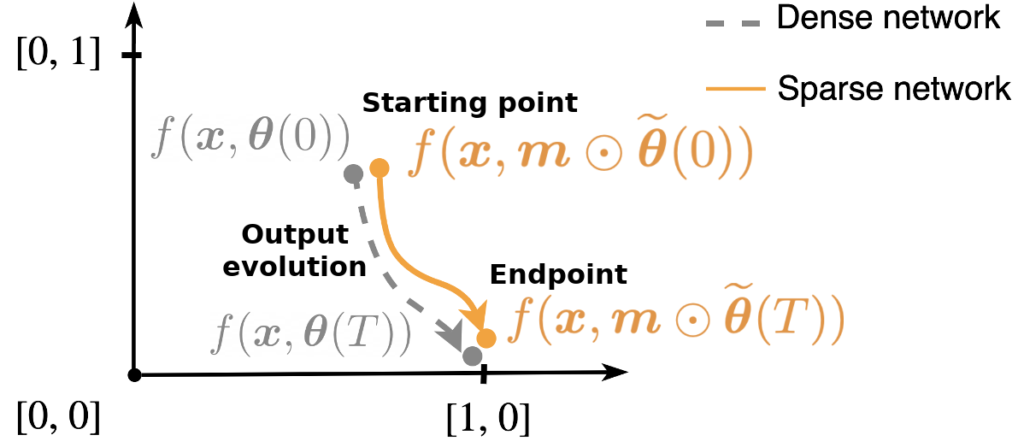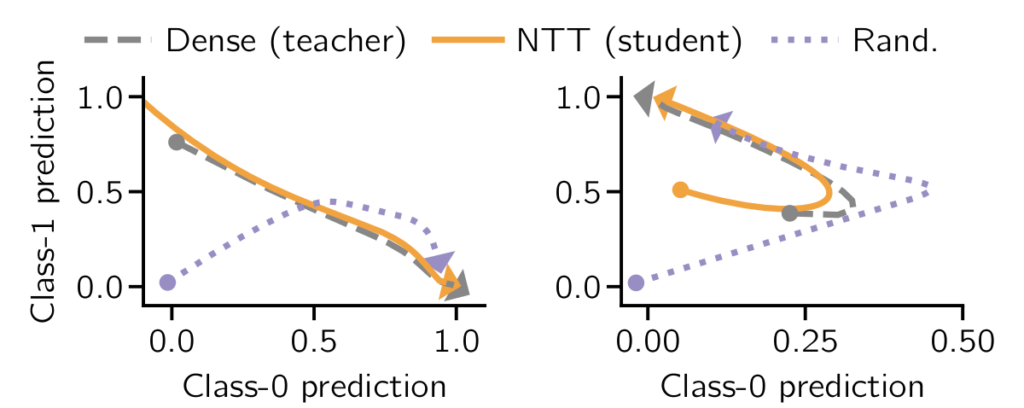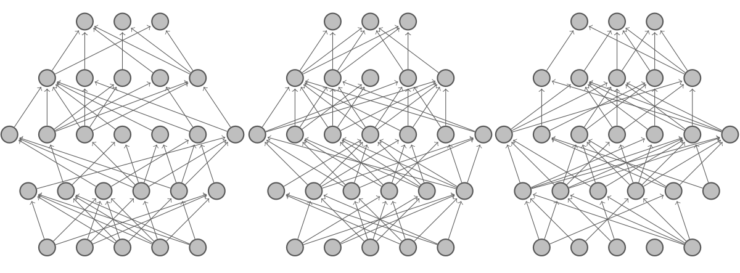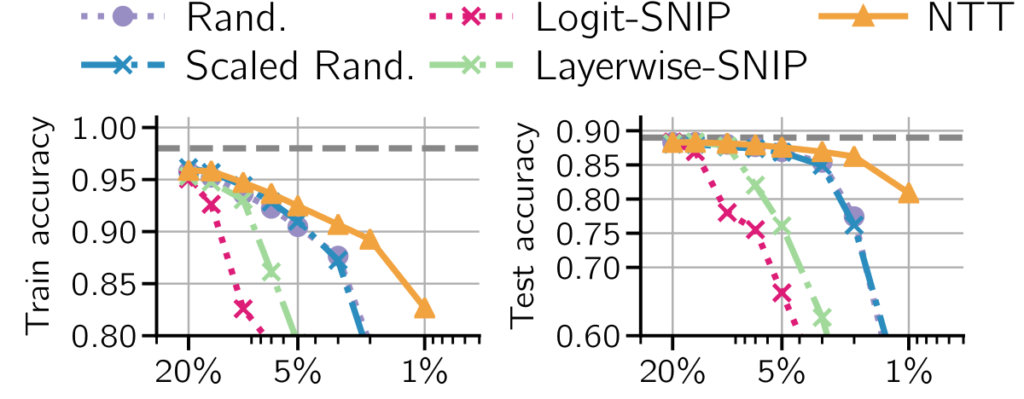New paper led by Tianlin Liu on “Finding sparse trainable neural networks through Neural Tangent Transfer” https://arxiv.org/abs/2006.08228 (and code) which was accepted at ICML. In the paper we leverage the neural tangent kernel to instantiate sparse neural networks before training them.
Deep neural networks typically rely on dense, fully connected layers and dense convolutional kernels. Yet, sparseness holds the potential for substantial savings in terms of their computational cost and their memory requirements. Neurobiology exploits this notion extensively.
But not all sparse neural networks are created equal, which raises the question as to how to initialize a sparse deep neural network without compromising its performance. Our paper tackles this issue by instantiating sparse neural networks whose training dynamics in function space are as close as possible to a dense net.

We achieve this by minimizing the mismatch between the neural tangent kernels of the sparse and an associated untrained dense teacher network. We call this method Neural Tangent Transfer (NTT). Crucially, NTT works without labeled data, and it allows pruning before training as it does not require a trained teacher network.

Importantly, NTT outperforms previous approaches in the layer-wise setting by effectively pruning convolutional filters in the lower layers, which contribute most of the computational cost.

